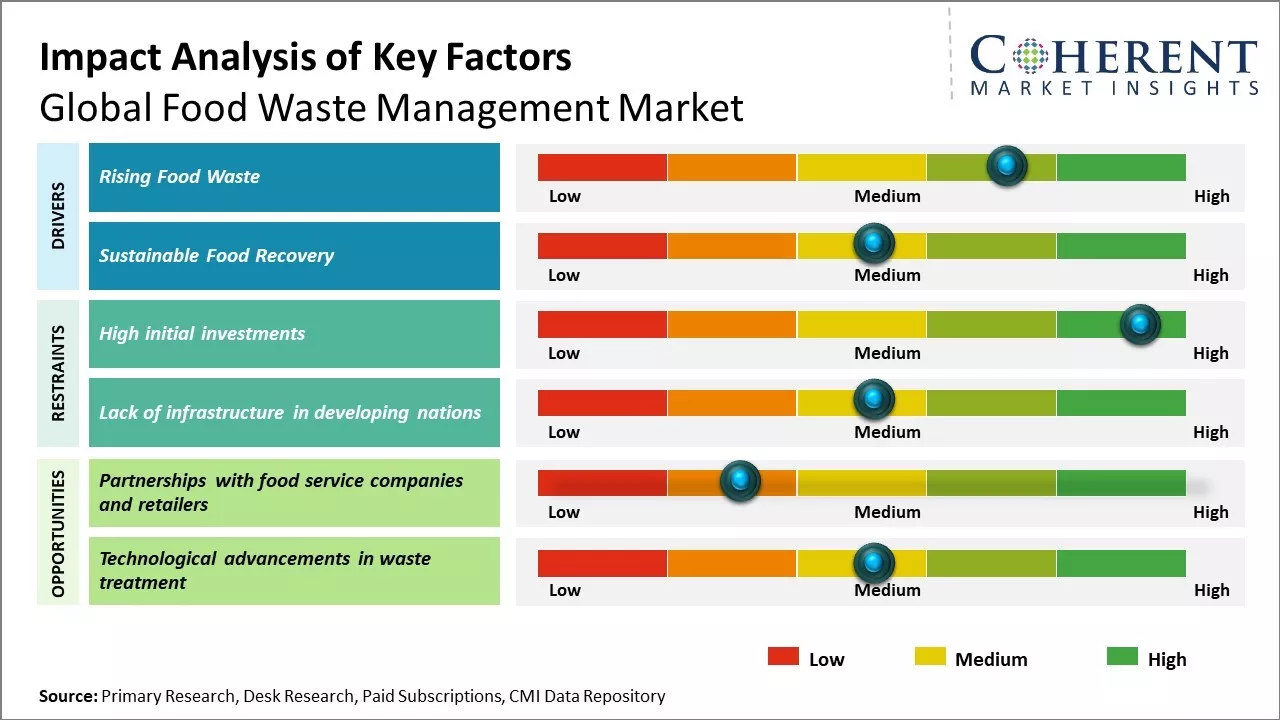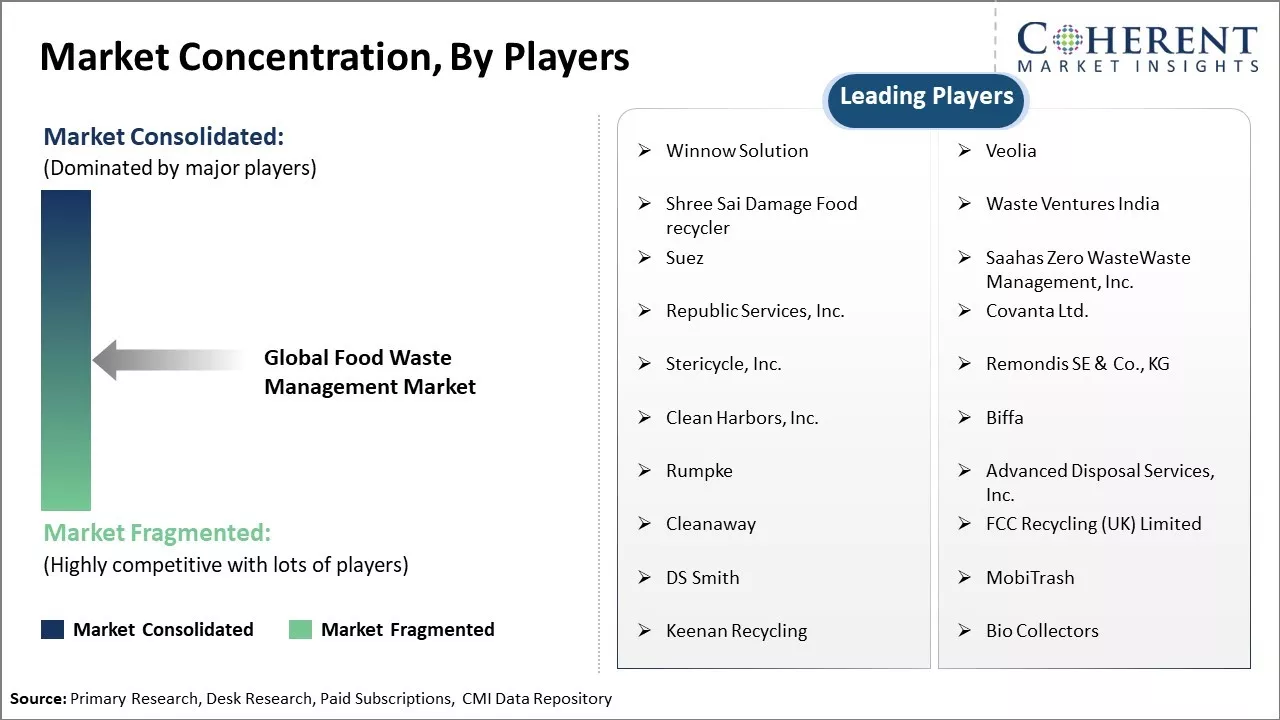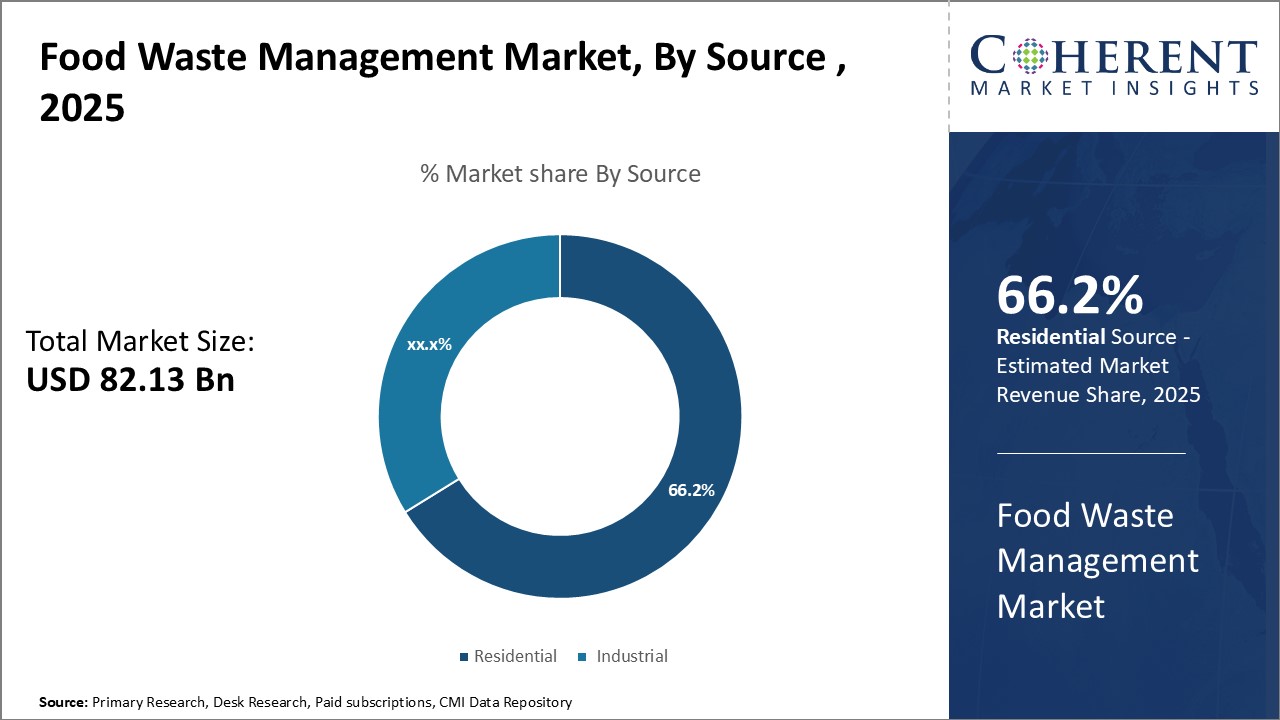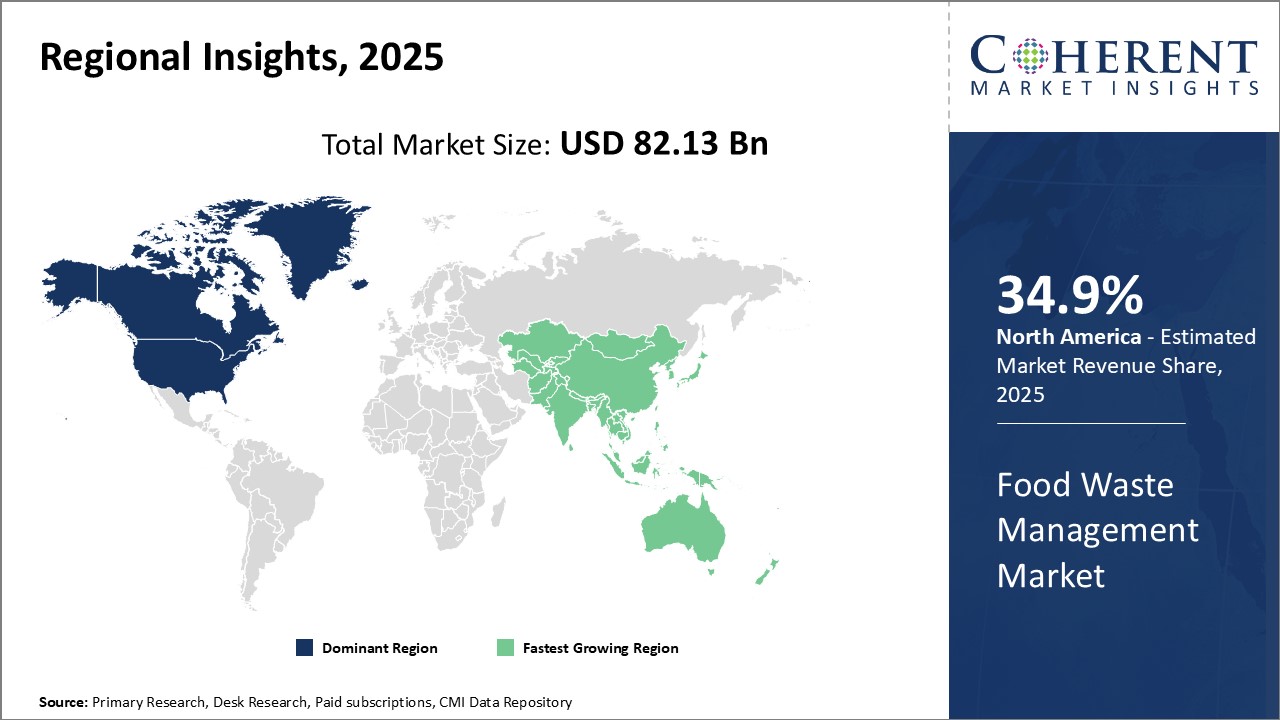Food Waste Management Market Size and Trends
The food waste management market is estimated to be valued at USD 82.13 Bn in 2025 and is expected to reach USD 121.14 Bn by 2032, growing at a compound annual growth rate (CAGR) of 5.7% from 2025 to 2032.

Discover market dynamics shaping the industry: Download Free Sample
The food waste management market is witnessing positive growth trends. Food production has been on the rise globally to meet the growing population demands however food wastage levels continue to be unacceptably high. Growing consumer awareness about sustainable food production and waste reduction coupled with governments banning food from landfills to redirect it for animal feed or energy production are some key factors driving greater investments in food waste recycling, anaerobic digestion and other management alternatives. New start-ups are entering the space with innovative technologies like smart packaging solutions to extend the product shelf-life or mobile apps that connect restaurants and hotels directly to food banks to donate excess cooked food. Integrating food waste management within existing waste collection systems and emerging Blockchain backed platforms that offer carbon credit programs are also opening promising opportunities for increased food waste diversion away from landfills in the coming years.
Rising Food Waste
The globalization of the food supply chain has led to an increase in the amount of food that is wasted at different stages. Longer supply chains mean that food has to travel longer distances from farms to processing facilities to retailers to consumers. This increases the chances of damage and spoilage in transit. Poor infrastructure in developing countries also contributes to food getting wasted due to lack of cold storage facilities. It is estimated that over a third of the food produced for human consumption gets wasted globally, amounting to billions of dollars worth of edible food going to landfills. The industrialization of agriculture with a focus on maximization of outputs has also resulted in cosmetic standards for fruits and vegetables that leave no room for imperfect sizes and shapes. This leads to huge amounts of produce being discarded even before it reaches the consumer.
Changes in consumer behavior have also played a role in higher food waste. With higher disposable incomes, people tend to over purchase food without properly planning their consumption. Large families find it difficult to finish packaged foods before their expiry date. Ready to eat meals and pre-cut fruit and vegetables make it convenient to throw out leftovers without much consideration. The rise of the nuclear family structure means that people often cook only for immediate consumption without accounting for utilization of leftovers. Younger consumers moving to cities for jobs and education result in transient living arrangements without ability to store excess dry or prepared food. Social media influence and photo-sharing of elaborate meals prepared leads to more elaborate and wasteful cooking practices just for the purpose of posts and stories online.
Market Concentration and Competitive Landscape

Get actionable strategies to beat competition: Download Free Sample
Sustainable Food Recovery
The environmental and economic costs of increasing levels of food waste have triggered a growing recognition of the need for sustainable food recovery and management practices. Initiatives focused on reducing waste at the source by better farm management, packaging solutions and innovations in logistics are being promoted. Organizations assisting food donations and redistribution to communities in need have expanded their networks significantly. New technologies allow for easier tracking of food levels across the supply chain using IoT and Blockchain to optimize production and transportation. Micrologistics delivery models are diverting surplus edible food from landfills to food recovery organizations with faster response times.
Consumer-facing brands are partnering with food apps and websites to offer discounted prices on approaching best-before products encouraging customers to purchase just what is required in a trip.
Key Takeaways from Analyst:
The rising awareness about environmental impacts of food waste and stringent regulations regarding its disposal are the major drivers boosting the adoption of food waste management solutions.
Lack of infrastructure for waste sorting and high initial costs of advanced waste treatment technologies still restrain the comprehensive implementation of commercial food waste management systems especially in developing regions. Further, fragmented waste management regulations across regions also create inconsistencies hampering standardization.
The market sees opportunities from growing investments by governments and businesses towards developing a circular economy-based waste management approach. Technological advancements in recycling, anaerobic digestion and other emerging disposal methods are expected to promote higher waste recovery rates.
Market Challenges: High initial investments
The high initial investments required for setting up food waste management infrastructure and facilities is a major restraint for the growth of the global food waste management market. Establishing collection, processing and disposal systems for food waste involves heavy capital expenditure. Businesses have to invest in separate collection bins, transportation vehicles, processing plants and advanced technologies for sorting, treating and converting food waste into useful byproducts.
For instance, setting up an anaerobic digestion plant that can process 100 tons of food waste per day requires an initial investment of over USD 10 million. Similarly, implementing automation and smart bin systems for smart sorting of food waste from other waste streams in large commercial kitchens, hotels and restaurants necessitates incurring heavy equipment and technology installation costs. The payback period for such investments is also long given the nascent stage of development of organized food waste management globally. This deters many businesses, especially Small and Medium Enterprises (SMEs) from proactively participating in formal food waste management activities.
Market Opportunities: Partnerships with food service companies and retailers
Partnerships with food service companies and retailers present a tremendous opportunity in the global food waste management market. Food service businesses like restaurants, cafes, caterers and retailers play a major role in food production and distribution.
Collaborating with these entities could help curb huge quantities of waste. Many food chains and grocery stores often throw away food that could still be consumed, due to factors like aesthetic standards, poor forecasting or inappropriate stocking. Partnering with waste management firms allows companies to redirect this edible excess to food banks or community programs, rather than sending it to landfills. Some businesses have found success with such alliances - it improves their public image as sustainable brands while helping feed more people from existing resources.

Discover high revenue pocket segments and roadmap to it: Download Free Sample
Insights by Source: Growing Population and Nuclearization Drive Residential Food Waste
In terms of source, residential is expected to contribute 66.2% share of the food waste management market in 2025, owing to the growing global population and increasing nuclearization of families. As the world population continues to rise year after year, more food is required to feed more mouths. However, with growing incomes and evolving lifestyles, many households now struggle with over purchasing, overpreparing, and leftovers from meals ending up in garbage. Working professionals and dual-income families also generate significant food waste due to lack of planning and reliance on takeaways.
The trend of nuclearization has accelerated food waste from residential sources. As families are getting smaller with fewer members under one roof, it is difficult to estimate exact food requirements and finished goods get wasted. Portion control is also a challenge resulting in more pre-prepared meals. The rise of single person households has considerably added to the problem as most food packages are designed for multiple servings.
Developed nations where most households can afford to throw out uneaten food contribute maximum residential waste. However, rapid urbanization in developing countries is creating similar patterns of higher living standards and increased consumerism contributing to residential food discards. lifestyle changes like increased social media and online food delivery culture have disrupted traditional eating habits resulting in more single-use leftovers. Unless communities and governments promote better resource management at grassroots, residential waste from global population shifts will continue rising.
Insights by Waste Type: Surplus Production and Spoilage Drive Industrial Food Waste
In terms of waste type, fruits & vegetables is expected to contribute38.3% share of the market in 2025, owing to challenges in the industrial production, supply chain, and perishability of these items. Huge quantities of fruits and vegetables are wasted every year due to aesthetic standards, quality sorting processes, and supply-demand mismatches at industrial and commercial levels.
Farmers often discard a significant portion of produce that does not meet rigorous cosmetic standards set by retailers and exporters for perceived blemishes, odd shapes or sizes. Industrial peeling and coring processes also result in large inedible byproducts. Lack of cold chain infrastructure in emerging markets leads to massive spoilage before produce reaches consumers. Farmers in developed nations also face challenges to forecast demand accurately and seasonality causes oversupply and dumping at some periods.
Perishability of fruits and vegetables means they deteriorate quickly after harvest if not processed or consumed on time. Packaging and transport hold ups in overcrowded supply chains make produce highly prone to physical damages and rotting. Supermarkets have a policy of discarding items past best before dates to avoid litigation risks, but often perfectly edible food is tossed. Unless industrial players develop robust agri-supply networks, efficient processing technologies, and minimize losses at each stage, fruits and vegetables waste will keep increasing globally.
Insights by Service Type: Lack of Coordination Drives Improper Disposal and Recycling
In terms of service type, disposal/recycling is expected to contribute 30.7% share of the market in 2025, as currently there exists lack of coordination in collection and recycling systems. Most municipalities do not have separate collection for food scraps and they end up in landfills emitting methane. Individuals are also unclear about proper techniques for composting at the household level due to lack of education and infrastructure. Though recycling and composting are effective methods to process food waste, inadequate participation of stakeholders is keeping recovery rates low. Coordination is missing between farmers, manufacturers, retailers, waste handlers, and local authorities to establish viable collection networks and end-use markets for recovered outputs. Absence of monetary incentives and regulations further undermine motivation for farmers, businesses to implement sustainable waste management practices.
Complex food waste streams from various sources and geographical spread obstruct centralized processing on large scale commercially. Small community programs are unable to attract private investments due to high perceived risks. Until governments help standardize definitions, tracking methodologies and enforce regulations; food waste cycling will remain economically unviable for private companies to play a lead role. International coordination can accelerate coordinated research, foster multilateral partnerships and knowledge exchange to adopt best practices.
Regional Insights

Need a Different Region or Segment? Download Free Sample
North America has emerged as the dominant region in the global food waste management market. The region is expected to account for 34.9% of the market share in 2025. With a strong presence of major food waste management companies and rising awareness about environmental protection. The U.S. alone generates around one-third of the global food waste annually. Strict regulations around solid waste management and landfill diversion in the U.S. drive greater adoption of food waste recycling technologies. Countries like Canada and Mexico are also rapidly expanding their food waste collection and recycling infrastructure.
The Asia Pacific region is growing the fastest, fueled mainly by China and India. Both countries struggle with enormous quantities of food wastage across the agricultural, packaging, and distribution sectors due to lack of proper cold chain and storage facilities. However, the growing middle-class population, urbanization, and rising consumer spending on food are prompting governments to formulate policies around food wastage reduction. Several local startups are introducing innovative solutions for commercial and industrial food waste upcycling. Countries in Southeast Asia are also witnessing higher investments to modernize supply chains and minimize agricultural losses.
Market Report Scope
Food Waste Management Market Report Coverage
| Report Coverage | Details | ||
|---|---|---|---|
| Base Year: | 2024 | Market Size in 2025: | USD 82.13 Bn |
| Historical Data for: | 2020 To 2024 | Forecast Period: | 2025 To 2032 |
| Forecast Period 2025 to 2032 CAGR: | 5.7% | 2032 Value Projection: | USD 121.14 Bn |
| Geographies covered: |
|
||
| Segments covered: |
|
||
| Companies covered: |
Winnow Solution, Veolia, Shree Sai Damage Food recycler, Waste Ventures India, Suez, Saahas Zero WasteWaste Management, Inc., Republic Services, Inc., Covanta Ltd., Stericycle, Inc., Remondis SE & Co., KG, Clean Harbors, Inc., Biffa, Rumpke, Advanced Disposal Services, Inc., Cleanaway, FCC Recycling (UK) Limited, DS Smith, MobiTrash , Keenan Recycling, and Bio Collectors |
||
| Growth Drivers: |
|
||
| Restraints & Challenges: |
|
||
Uncover macros and micros vetted on 75+ parameters: Get instant access to report
Food Waste Management Industry News
- In May 2024, the United States Department of Agriculture (USDA) announced the expansion of its interagency collaboration to help reduce food loss and waste across the country. This initiative aims to leverage the expertise and resources of multiple government agencies to address this critical issue more effectively.
- In 2023, Hilton, a global hospitality company, announced the launch of its "Green Breakfast" initiative, further solidifying its commitment to reducing food waste across its properties worldwide
- In 2022, a startup based in Delhi, India, made significant strides in addressing the issue of food waste management through its innovative food-to-feed conversion technology. This sustainable approach aims to reduce the environmental impact of food waste while providing a valuable resource for animal feed production.
- In 2022, Compass Group, one of the world's largest food service providers, announced a significant step in its commitment to halving food waste by 2030. This ambitious goal aligns with the United Nations' Sustainable Development Goal (SDG) 12.3, which calls for a 50% reduction in global food waste by the end of the decade.
*Definition: The food waste management market involves technologies and services that help reduce, reuse, and recycle food that otherwise ends up in landfills. This includes systems to collect and transport food scraps from restaurants, grocery stores, and other food processors/manufacturers to be converted into products like compost, animal feed, or renewable energy through anaerobic digestion. Food waste management helps businesses and communities lower disposal costs while becoming more environmentally sustainable.
Market Segmentation
- Source Insights (Revenue, USD Bn, 2020 - 2032)
- Residential
- Industrial
- Waste Type Insights (Revenue, USD Bn, 2020 - 2032)
- Dairy & Dairy Products
- Fruits & Vegetables
- Meat & Poultry
- Fish & Seafood
- Oilseeds & Pulses
- Others (Roots & Tubers, etc.)
- Service Type Insights (Revenue, USD Bn, 2020 - 2032)
- Collection
- Transportation
- Disposal/Recycling
- Others
- Regional Insights (Revenue, USD Bn, 2020 - 2032)
- North America
- U.S.
- Canada
- Latin America
- Brazil
- Argentina
- Mexico
- Rest of Latin America
- Europe
- Germany
- U.K.
- Spain
- France
- Italy
- Russia
- Rest of Europe
- Asia Pacific
- China
- India
- Japan
- Australia
- South Korea
- ASEAN
- Rest of Asia Pacific
- Middle East & Africa
- GCC Countries
- Israel
- Rest of Middle East & Africa
- North America
- Key Players Insights
- Winnow Solution
- Veolia
- Shree Sai Damage Food recycler
- Waste Ventures India
- Suez
- Saahas Zero WasteWaste Management, Inc.
- Republic Services, Inc.
- Covanta Ltd.
- Stericycle, Inc.
- Remondis SE & Co., KG
- Clean Harbors, Inc.
- Biffa
- Rumpke
- Advanced Disposal Services, Inc.
- Cleanaway
- FCC Recycling (UK) Limited
- DS Smith
- MobiTrash
- Keenan Recycling
- Bio Collectors
Share
Share
About Author
Yash Doshi is a Senior Management Consultant. He has 12+ years of experience in conducting research and handling consulting projects across verticals in APAC, EMEA, and the Americas.
He brings strong acumen in helping chemical companies navigate complex challenges and identify growth opportunities. He has deep expertise across the chemicals value chain, including commodity, specialty and fine chemicals, plastics and polymers, and petrochemicals. Yash is a sought-after speaker at industry conferences and contributes to various publications on topics related commodity, specialty and fine chemicals, plastics and polymers, and petrochemicals.
Missing comfort of reading report in your local language? Find your preferred language :
Transform your Strategy with Exclusive Trending Reports :
Frequently Asked Questions
EXISTING CLIENTELE
Joining thousands of companies around the world committed to making the Excellent Business Solutions.
View All Our Clients
